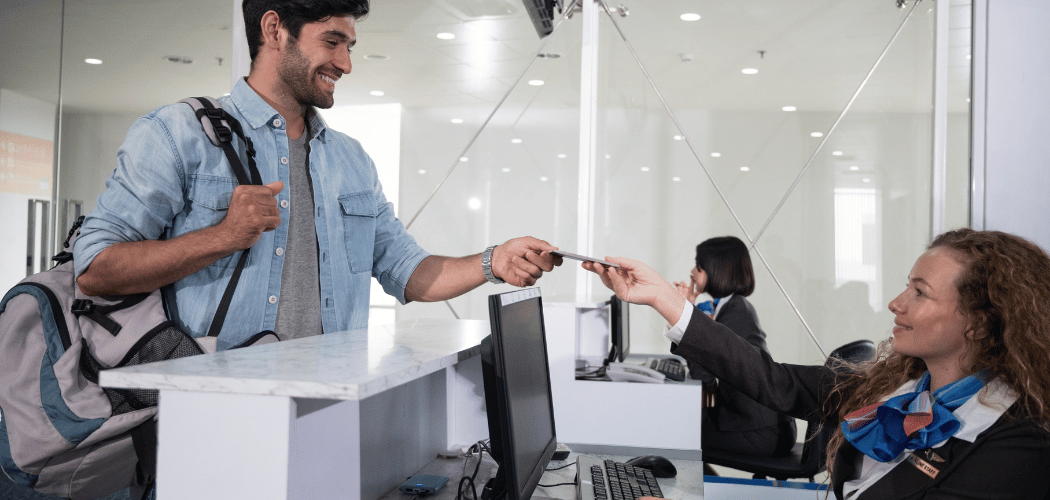Assembling a technology stack to successfully compete in a digital world requires new thinking. There’s a very clear trend of enterprises adopting niche expert solutions that leverage “Fourth Industrial Revolution” technologies like artificial Intelligence (AI) to be able to engage with customers in the way customers now expect.
It’s not only the new technologies that are the focus of the “buying the builder” trend in Australian enterprises; new product offerings are also being acquired.
Australia does still indeed have a strong representation of home-grown customer experience innovations, but not all can be expected to compete at the global level. Australian enterprises demonstrate a sophisticated appetite for the best possible offerings from around the world and a willingness to trial new models and technologies.
What happens when my industry gets “Netflixed”?
Qantas is the third oldest airline in the world and Australia’s national airline. Earlier this year, Qantas’s then CTO Rob James asked, “What if Netflix was an airline?”
His thesis was that all the improvements in airline customer experience today are merely incremental: better check in, in-flight Wi-Fi, and longer flights. In his view, the danger would come from a challenger doing what Uber did to taxis or Tesla to distribution. The danger would be a challenger that put customers at the center of their offering.
On-time performance
The key driver of Qantas’s Net Promoter Score is their on-time performance. To protect this key measure, they’ve since deployed artificial intelligence (AI) to accurately predict when flights are going to land, LIDAR to measure passenger volumes, IOT to track baggage machines, and trialed facial recognition (since halted) to speed up boarding.
None of these are marketing tools. All are designed to get people through airports and boarded, hit on-time performance, and support Qantas’s Net Promoter Score.
Customer Experience driven by the fourth industrial revolution
Every business needs to have an opinion on these Fourth Industrial Revolution technologies and how they’re going to leverage them or defend against a competitor using them. Winning use cases have yet to be defined, so each business must define its own.
Buy into the builder.
Westpac is the second biggest bank in Australia and also, its oldest. Whilst it doesn’t need to keep aircraft on time it does need AI to better engage with customers in the Netflix fashion they’re accustomed to. It’s buying that capability by buying into the banking AI experts.
In July, Westpac took a stake in Canadian fintech Flybits through its investment arm Reinventure. Flybits enables hyper-personalised Netflix-like recommendations for bank customers through artificial intelligence. Flybits founder Hossein Rahnama said, “Customers are already used to seeing content and recommendations based on their behaviour.” Flybits goes to the heart of bank system’s inflexibility and inability to engage customers.
In November, Westpac bought into and will deploy British fintech 10X Technology Future’s solution to solve the bank’s legacy platform’s inability to deliver the real-time experiences customers expect. 10X, founded by ex-Barclays CEO Anthony Jenkins, is all about making the bank experience timely and relevant.
Commonwealth Bank, Westpac, and McDonalds have a shared approach to innovation
Australians use of credit cards is in decline as households offload debt. Debit card spend is up and this year, it will make up more than 50% of all payment card spend. All the attention is now on "Buy Now Pay Later" products and a slew have been launched by Australian lenders in the last year.
Commonwealth Bank of Australia is Australia’s largest bank and it is the most digitally advanced with intentions on delivering world class experiences to its customers (its banking app is rated by Forrester as the best in Australia and third best in the world). Rather than partner with an Australian startup, Commonwealth Bank targeted the best in the world and spent $100m for a 2% stake in Sweden’s Klarna and exclusive rights to the Australian market.
The Australian experience isn’t unique to Australia. Globally, McDonalds has been on a buying spree this year taking stakes in Dynamic Yield for Amazon-like recommendations at the drive-through and Plexure for mobile marketing. United Airlines has taken a stake in Facial Recognition provider Clear and deployed it for their customers.
The second trend apparent in all these purchases is that Westpac, Commonwealth Bank, McDonalds, and United Airlines are taking stakes in these specialist providers but not taking control or bringing them in house. They’re leveraging their skills and knowledge and perhaps also ensuring they don’t get acquired by the legacy providers.
Niche solutions and the current, evolving marketing stack
The classic approach to a marketing stack has been to lean heavily on a single enterprise vendor such as Salesforce or SAP. “They’re sold as a one size fits all solution,” says Adam Schaffer of Australian customer strategy consultancy Ellipsis & Company, “but these platforms can’t do it all.”
The more difficult, but in many cases, more effective approach in his view is to stitch together best of breed platforms to deliver an outcome. In most cases this doesn’t require ripping out the legacy platforms, but rather integrating the technologies that make the existing system smarter and able to deliver the real-time interactions customers want.
Real-time interactions are at the core of Eagle Eye’s offering — the UK technology firm which counts Sainsbury’s and Tesco as clients has opened an office this year in Australia. Their platform is world leading in one very specific area: “Enabling retailers to create digital connections with their consumers,” according to Jonathan Reeve who is spearheading their Australian expansion.
With Amazon having launched in Australia 2 years ago, “Our SaaS technology helps store retailers level the playing field with the e-commerce pure-plays,” says Reeve. Their particular capability integrates with existing retailer marketing stacks. No Australian clients have been announced, but Eagle Eye already has a team of 6 in their Melbourne office with an announcement expected soon.
Australian customers are sophisticated but haven’t always had the best customer experiences available to them. That’s changing as customers push their providers for better offerings, and the regulators mandate new customer friendly advances including open banking and the first drafts of customer data protection.




